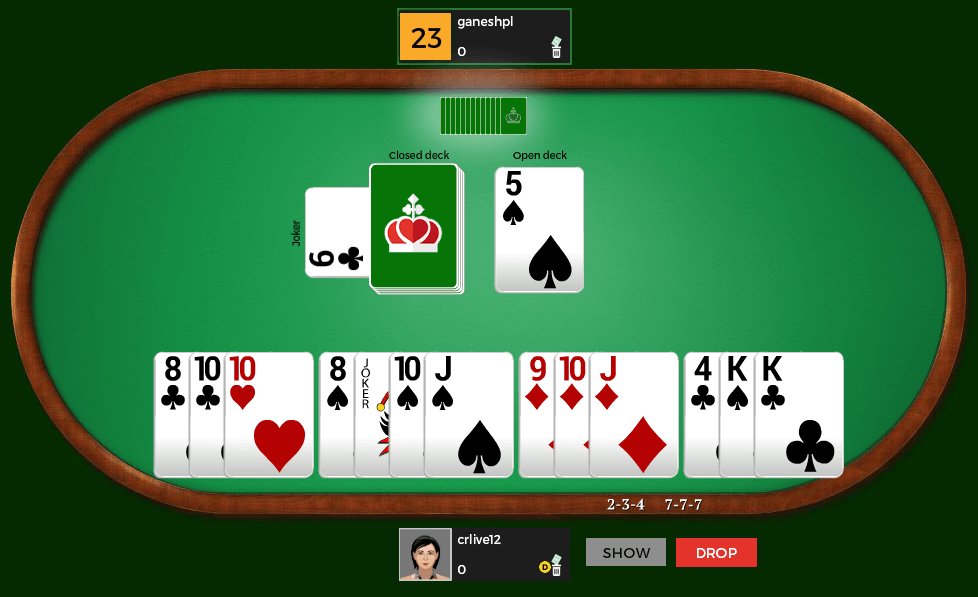Rummy Table, Rummy is a beloved card game that has captured the hearts of players worldwide. A significant part of the rummy experience revolves around the rummy table, where the game unfolds. This article delves into the various aspects of the rummy table, including its setup, key elements, and strategies for success. Whether you’re a novice or a seasoned player, understanding the rummy table can enhance your gameplay and enjoyment.
The Setup of a Rummy Table
A rummy table can be physical or virtual, depending on whether you’re playing in person or online. Despite these differences, the essential elements remain consistent across both formats.
Physical Rummy Table
In a traditional setting, the rummy table is a flat surface where players gather to play. It typically includes:
- Deck(s) of Cards: Depending on the variant, one or two standard 52-card decks are used, often with jokers.
- Chips or Tokens: In some versions, chips or tokens are used for scoring or betting purposes.
- Score Sheet: A sheet or notepad to keep track of scores over multiple rounds.
Virtual Rummy Table
Online rummy platforms simulate the physical table, providing an interactive and user-friendly interface. Key elements include:
- Digital Cards: Graphically represented cards dealt to each player.
- Player Avatars: Icons or images representing each player.
- Chat Functionality: A feature allowing players to communicate during the game.
- Scoreboard: A digital display showing the current scores and other relevant game information.
Key Elements of a Rummy Table
Understanding the layout and elements of a rummy table is crucial for effective gameplay. Here are the key components you will encounter:
1. Dealer and Dealing
At the start of the game, a dealer is chosen (either randomly or based on predefined rules). The dealer shuffles the cards and deals them to the players. The number of cards dealt varies by rummy variant (e.g., 13 cards in Indian Rummy).
2. Stock Pile and Discard Pile
- Stock Pile: The remaining cards after dealing are placed face-down in the center of the table, forming the stock pile.
- Discard Pile: The top card of the stock pile is placed face-up next to it, starting the discard pile. Players draw from either the stock pile or discard pile during their turn.
3. Player Hands
Each player arranges their cards in their hand, aiming to form valid sequences and sets. The cards are typically grouped by suit and rank for easy visualization.
4. Melding Area
A designated space on the table where players place their completed sequences and sets. This area is crucial for declaring and validating the end of a game.
Strategies for Success at the Rummy Table
Mastering the rummy table involves not only understanding its elements but also employing effective strategies. Here are some tips to help you succeed:
1. Focus on Pure Sequences
A pure sequence (a run without jokers) is mandatory for a valid declaration. Prioritize forming at least one pure sequence early in the game to increase your chances of winning.
2. Observe Discarded Cards
Pay close attention to the cards discarded by your opponents. This can provide insights into their strategy and the cards they are collecting, helping you make informed decisions.
3. Utilize Jokers Wisely
Jokers are valuable assets in rummy. Use them strategically to complete sets or sequences that are difficult to form naturally. However, avoid using jokers in pure sequences, as they are not allowed.
4. Discard High-Value Cards Early
High-value cards (10, Jack, Queen, King, Ace) can significantly increase your points if you fail to declare. Discard them early if they don’t fit into your sequences or sets.
5. Plan Your Moves
Think ahead and plan your moves carefully. Consider the potential combinations you can form and the cards you need. Avoid holding on to unnecessary cards that don’t contribute to your strategy.
6. Adapt to Opponents’ Strategies
Be flexible and adapt to the playing style of your opponents. If you notice a particular pattern or strategy, adjust your approach to counteract their moves effectively.
Conclusion
The rummy table, whether physical or virtual, is the heart of the game. By understanding its setup, key elements, and effective strategies, you can enhance your rummy experience and increase your chances of success. Whether you’re playing for fun or in a competitive setting, these insights will help you navigate the rummy table with confidence and skill. So, gather your cards, arrange them strategically, and enjoy the thrilling world of rummy!




